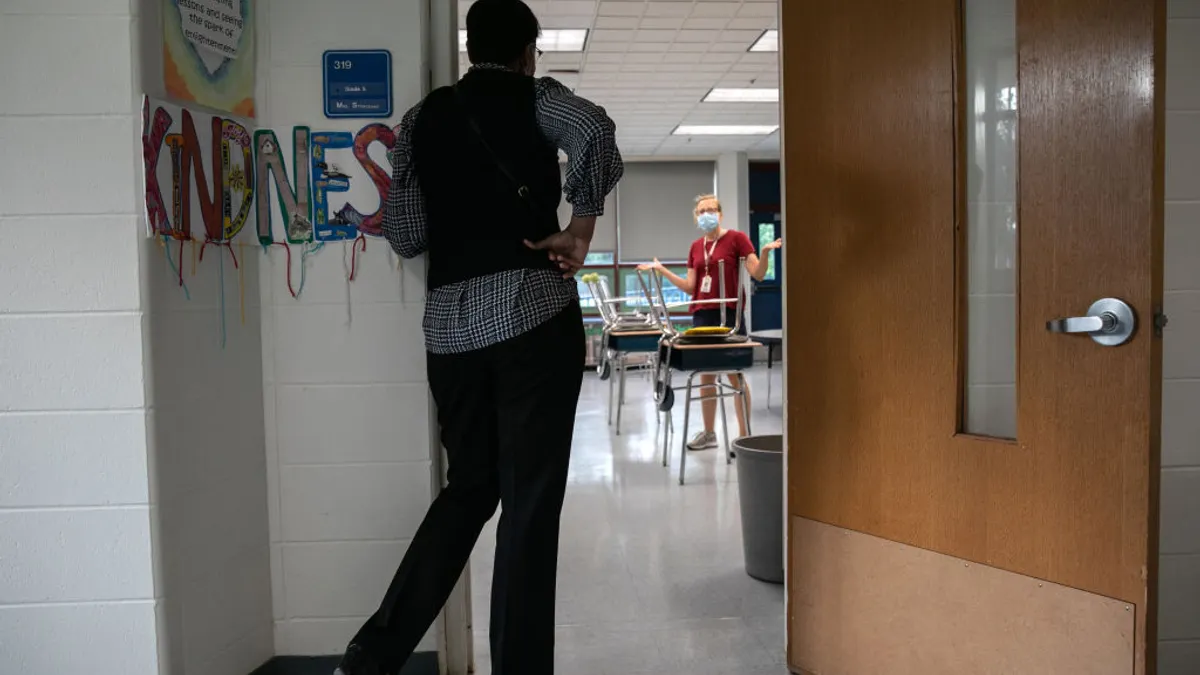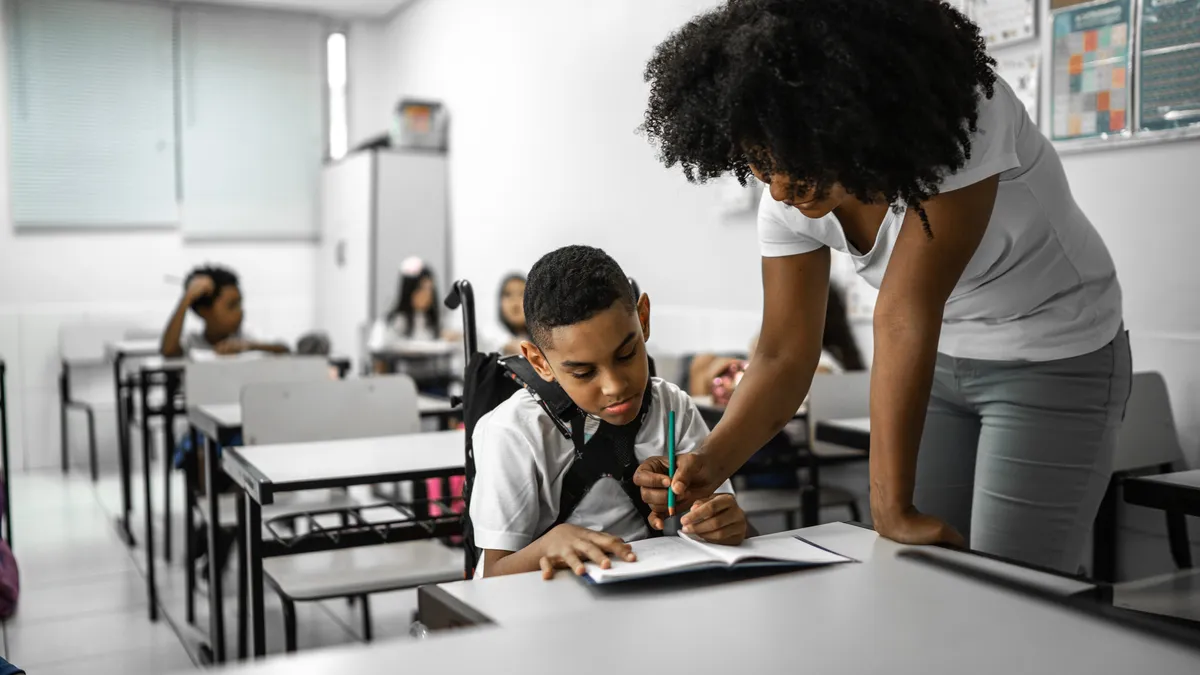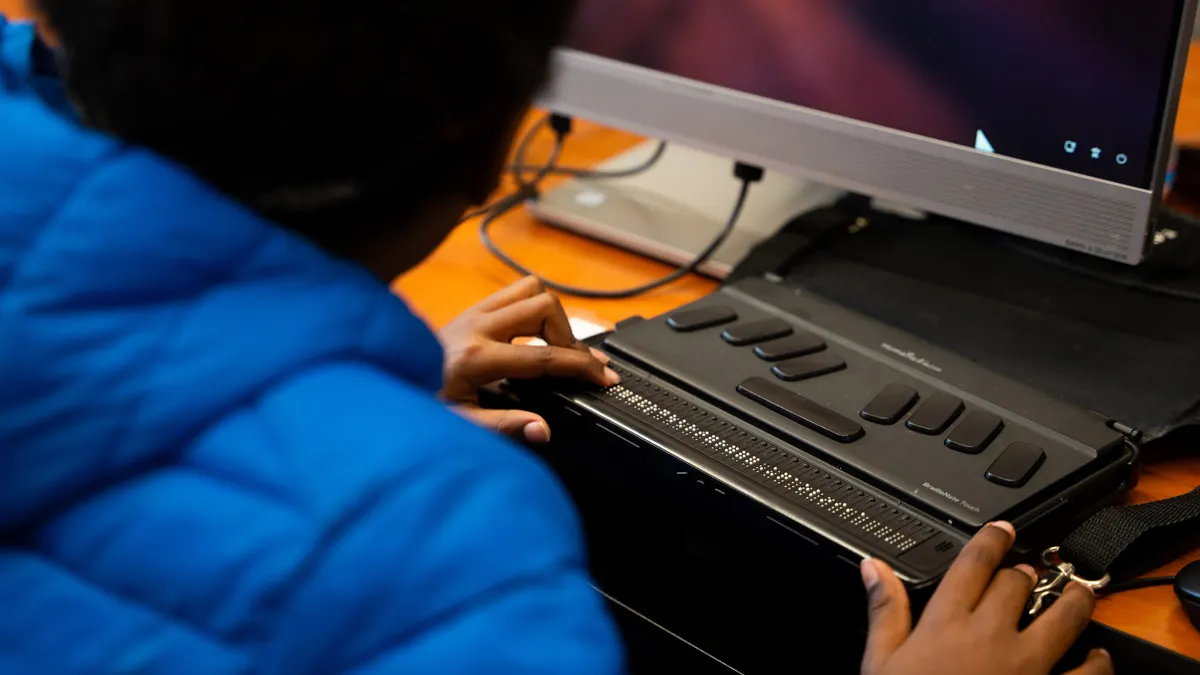Clear family-school communications and robust supports for students with learning differences are just a few ways education systems can improve family-school connections to support student outcomes, nonprofit Learning Heroes said in a report released Tuesday.
One of the biggest barriers to family-school partnerships is what the report calls a "perception gap," or when families believe their child is performing at higher academic levels than what's really occurring.
In fact, about 88% of parents in a 2023 survey said they thought their child was at or above grade level in math and reading. In reality, the actual share of children performing at this level is closer to 30%, as shown by 8th grade performance on the 2024 National Assessment of Educational Progress.
Although parents carry significant influence over their child's education, they can't help fix a problem they don't know exists, the report said.
“Parents today have unprecedented voice and choice in their children’s education, yet, too often, lack the information to make confident, informed decisions,” said Bibb Hubbard, founder and CEO of Learning Heroes, in a Tuesday statement.
The organization used 10 years of research on family-school partnerships to inform best practices that improve these relationships with the aim of driving student success.
“With a decade of insights from parents, students, teachers, and principals, we have a clearer roadmap for creating schools and communities that work in true partnership with families and help every child thrive," Hubbard said.
The Learning Heroes report offered these 10 suggestions for strengthening family-school partnerships.
Give parents accurate information on student performance
When parents know their child needs support, they are more likely to seek academic supports, such as tutoring and summer math or reading programs. They are also more likely to prioritize school attendance.
The report highlights state-level efforts in Texas, Arkansas and Virginia to provide parents videos, tools, and guides to bolster understanding of student grades and test scores. This also allows for comparisons with students across the state to help parents gauge their child's college or career readiness.
Share multiple points of learning data
Results from annual state tests and other standardized or formative assessments can give families a fuller picture of their child’s strengths and needs.
Some 79% of parents said their children earn Bs and better, the report said, leading most parents to think their child is performing on grade level. However, report cards can include factors other than academic achievement, such as classroom participation, effort and completion of assignments, that don't necessarily comport with grade-level performance.
"As it stands, too many report cards are still sending false signals, and many families, trusting the information they’ve been given, simply aren’t aware that their students may be behind," the report said.
Provide parents access to information
Ensuring parents are aware of their child's progress — not just through a quarterly report card, but through conversations with teachers and other means — can help parents take action to help their child improve.
Allow teachers time to connect with parents
Schools should prioritize parent-teacher teams by safeguarding the time teachers need to communicate with parents, as well as needed preparation time. One example is to allow one-to-one conversations between parents and teachers at back to school nights.
For instance, Prodeo Academy, a charter network in the Twin Cities area of Minnesota, serving about 1,000 students, prioritized candid conversations, data-sharing and family-teacher conferences during the 2023-24 school year. These activities resulted in a notable increase among parents who recognized their child wasn’t working at grade level, the report said.
Avoid family engagement as a standalone goal
Integrating family engagement into overall school strategies for attendance, literacy and math achievement and other priorities will help educators and parents connect this effort to overall school outcomes.
For example, home visits can improve attendance, and student action plans created jointly by teachers and parents could help boost achievement.
Provide pathways to postsecondary success
Whether students attend college or go right into the workplace after high school graduation, schools should guide parents and students about the opportunities available. Access to Advanced Placement courses, dual enrollment, career awareness experiences and career and technical education can all help students discover their passions and start planning for their futures.
Don't ignore social and emotional growth
About three-fourths of parents said it was “absolutely essential” or “very important” that their child’s school has high expectations for social and emotional development. That's nearly as many — 80% — who said the same for learning and academic progress.
The report highlights the Collaborative for Academic, Social, and Emotional Learning's Guide to Schoolwide SEL, which includes strategies for family-school partnerships to support social-emotional learning practices. Strategies include helping parents understand what SEL is and setting a positive tone by communicating with families early in the school year.
Build teamwork to address student learning differences
Although nearly 1 in 5 students have a learning difference like dyslexia or dyscalculia, only 20% of parents of a child with a learning difference say it’s very easy to navigate the diagnosis process.
By communicating regularly and providing helpful resources, schools can help alleviate parents' anxieties, which can get in the way of identifying and accepting a learning difference and getting the needed services.
Stop talking in ‘edu-jargon’
Terms used in the education field, such as "self-regulation," "executive functioning" and "growth mindset," may not be recognizable or may even be misunderstood by parents. Instead, educators should use terms understandable for families.
For instance, rather than saying “resilience,” educators could talk about how schools help students “overcome challenges” or “keep trying when things are hard.”
Having clear, accessible communications can help foster trust and collaborations with parents, the report said.
Create family engagement at all grade levels
Family engagement remains important in the middle and high school years as students become more independent. In fact, family engagement in middle and high school years is essential to helping teens feel seen, supported and motivated, the report said.
This involvement is critical for supporting school attendance, and school leaders should work with parents in all grades to remove barriers to regular attendance.







 Dive Awards
Dive Awards















